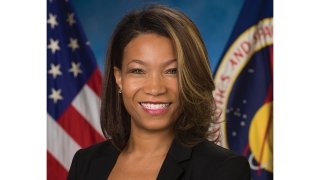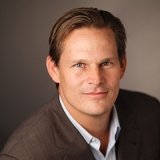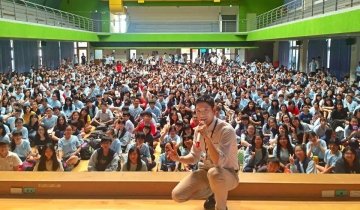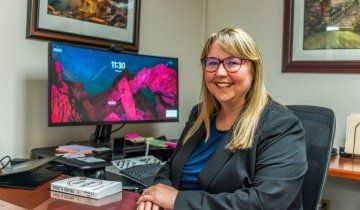When she was a kid growing up in Los Angeles, all Michelle Hooks MAT ’17 wanted to do was discover how things worked. In seventh grade, she placed third in a science fair for a project building a Morse code machine, netting $100— and an instant passion for science.
The next year, she had her eyes set on first place with a project to test how liquid’s density affects its freezing point. Her mom bought her three blenders, as she kept breaking them while trying to make a centrifuge for her experiments. “Mine didn’t work so well,” Hooks says with a laugh. “But I figured out how to use one in a hospital to run my experiments.” That year, she won first place. Her $500 first-place prize helped her to connect her interest in science with the possibility of pursuing a career in STEM.
During high school, Hooks worked in an orthodontist’s office with plans to go to dental school. She studied biology as an undergraduate at California State University, Northridge, and tutored historically underserved students—kids who were inspired the way she was in high school but who needed extra help.
But not everything came easily: She recalls spending endless hours in the tutoring lab on campus to keep up in her science classes. “It was sometimes hard for me to identify with something I loved so much but was really difficult,” she says. It didn’t help that she rarely saw people who looked like her in STEM careers. “I recognized how much representation matters and decided to focus my efforts to increase access to STEM,” she says.
She pursued a Master of Arts in Teaching at USC Rossier, while her husband completed a residency in dental anesthesiology. Hooks’ time at USC Rossier was transformative, and she began to understand pedagogical strategies to improve student learning in science. “You study very differently for an English class than you would for a physics class,” she says. “I also learned how to draw on the background knowledge of students and bring that in to help them cultivate their own knowledge.”
One of the major tenets of the program, she says, was to help teachers make science lessons look more like real science; it wasn’t about rote memorization and recitation. That appealed to Hooks, because she was driven by curiosity. She taught biology and astrobiology in New York while earning her master’s. Then an email came from USC Rossier Professor Fred Freking: There was an internship at NASA designed to give science educators authentic experiences with lab research. Hooks thought it sounded amazing but didn’t quite see herself at NASA. Freking continued to gently prod. Then Hooks watched the movie Hidden Figures, about Katherine Johnson and other Black women who were crucial to NASA’s early space missions. She told her husband her decision: She was applying.
After her internship, Hooks was hired as an instructional coach and education coordinator at NASA’s Johnson Space Center in Houston. There, she develops lessons, activities and challenges to connect K–12 students and teachers with the wonders of space exploration.
One of her favorite parts of working for NASA is the opportunity to help students see themselves in spaces they never imagined. She frequently speaks at schools and conferences, drawing parallels between the challenges and triumphs of spaceflight and other areas of life. After all, no one has experience as an astronaut when they are hired, she tells students. “They have to see themselves in space long before launch,” she says. “The skills necessary for space exploration—like resilience, collaboration and persistence—translate to whatever your ‘astronaut’ dream may be.”
Hooks’ next challenge: dental school.





